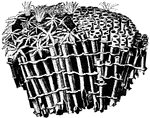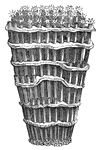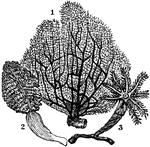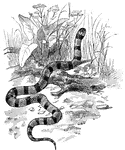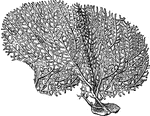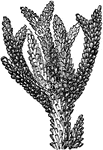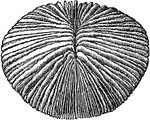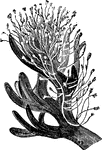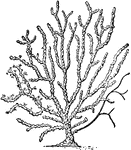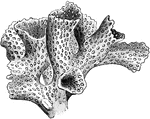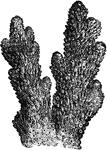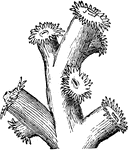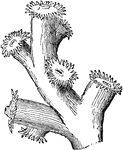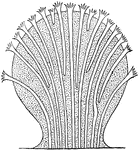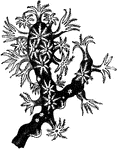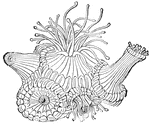
Coral Polyp
An individual coral is known as a polyp. They resemble sea anemone, as they have tubular bodies with…
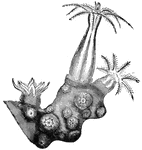
Coral Polyp
An individual coral is known as a polyp. They resemble sea anemone, as they have tubular bodies with…

Red Coral
Used for jewellery, grows in a bushy form on rocks at the bottom of the Mediterranean and Red seas.
Fort Taylor
"Fort Taylor, Key West, Fla. Key West, the most western of the Pine Islands, is about sixty miles southwest…
!["[From left to right:] Fusus Longissimus, Pearl Oyster and Coral, Volute, Thorny Woodcock." — Goodrich, 1859](https://etc.usf.edu/clipart/13900/13992/mollusca_13992_mth.gif)
Mollusca
"[From left to right:] Fusus Longissimus, Pearl Oyster and Coral, Volute, Thorny Woodcock." —…

Anthozooids
"End of a branch of red coral of commerce, Corallium rubrum, with three anthozooids, A, B, C, in different…

Coral
"Coral is the name applied to the stony structures secreted by many of the actinozoa, and applied to…
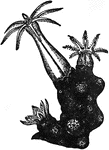
Coral
"Coral is the name applied to the stony structures secreted by many of the actinozoa, and applied to…

Tree-coral
"These animals are generally called Tree-corals, on account of the forms of the polypidons…
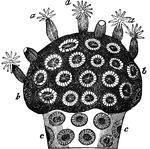
Astrae virdis
"a a, expanded polypes; b b, polypes withdrawn into their cells; c c, coral uncovered by flesh, showing…

Astraea rotulosa
"It is to this family more especially that the formation of the coral reeds is to be attributed. In…
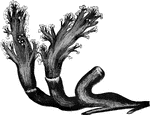
Alcyonium elegans
"In the genus Alcyonium, the polypidom is of a spongy nature, and contains a multitude of minute calcareous…
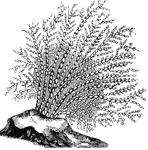
Sea-fan
"In the family of the Gorgonidae the substance of the polypidom is collected into a solid central axis,…

Red coral
"It appears to be confined to the Mediterranean Sea, where it grows, especially on the southern coast,…
High Island
This is an illustration of an island with an altitude of two thousand feet or more. It is surrounded…
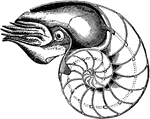
Nautilus
A marine creature of the class Cephalopoda. They are found only in the western Pacific, inhabiting waters…

Fossil Echinidea
"Cidaris florigemma, with spine, a, and single ambulacral plate, magnified, b, (after Wright; Coral…

Emporer Moth Caterpillar
Platysamia cecropia. The caterpillar occurring on a great variety of plants, including many of our fruit-trees…
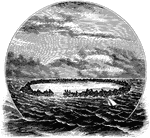
Coral Island
The reef forming the island is of limestone, derived form countless skeletons of minute polyps that…
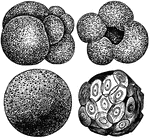
Foraminifera
These animalcule are so small that 1,000,000 are equal in bulk to only one cubic inch. They appear to…

Types of Seashore Life
24. Various corals, 25. Razor-shell, 26. Cockle, 27. Various winkels, 28. Shore crab, 29. Father lasher,…
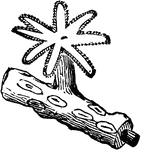
Coral Polyp
"Part of a branch of a coral of the genus Gorgonia, showing one of the polyps expanded." -Dana, 1883
Barrier Reef Development
"Diagram suggesting the development of a barrier reef and an atoll, successively, from a fringing reef,…
Coral Reef Section
A section of an actual coral reef, showing the formation: two sides tall, above sea level with the middle…

Coral Stages
"Life history of a coral, Monoxenia darwinii. A, B, Ovum. C, Division into two. D, four-cell stage.…
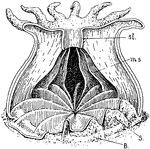
Coral Shell
"The formation of a coral shell (Asteroides). st., Stomodaeum; ms., mesentery; s., calcareous septum;…
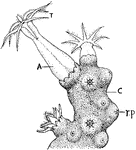
C. Ruburm
"Corallium rubrum, a corner of a colony. A., Anthocodia or retractile portion of a polyp; r.p., completely…

Indian Currant and Elder Leaves
Of the Honeysuckle family (Caprifoliaceae), the Indian currant (Symphoricarpos orbiculatus) and the…
